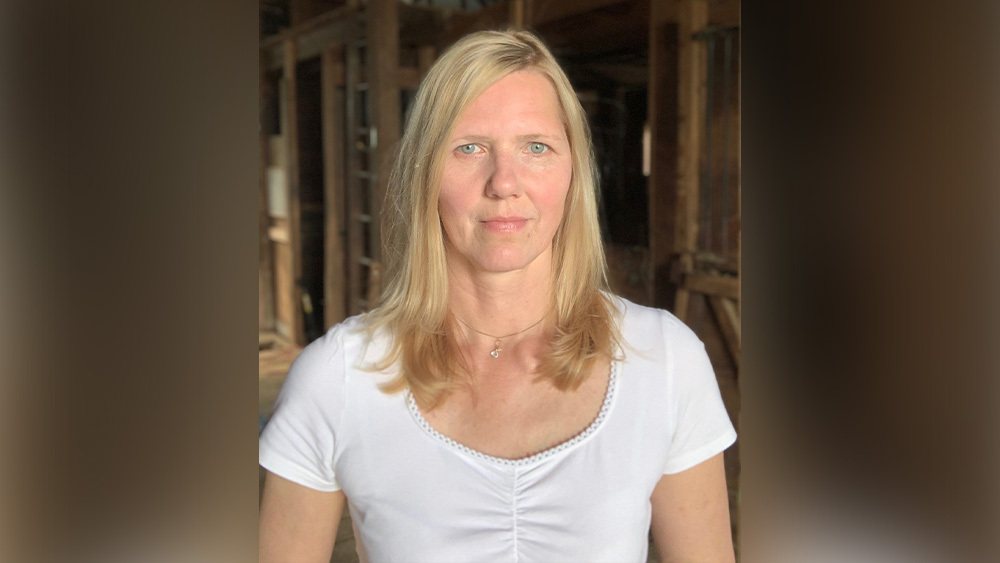Article Highlights
-
Sleep problems are a common symptom of Long COVID.
-
Poor sleep from Long COVID might make people more sensitive to pain.
-
Inflammation likely plays a role in neurological symptoms of Long COVID.
Sleep is as important for our health as good food and clean water. It allows our brains to preserve memories and remove waste products. But for some people with Long COVID, sleep no longer comes easily.
Research suggests that about 40% of people with Long COVID report sleep issues among their symptoms. Problems can include insomnia, daytime sleepiness, waking up several times a night, or not feeling refreshed in the morning.
Two small studies supported by several institutes within the National Institutes of Health, including the National Institute of Neurological Disorders and Stroke (NINDS) and National Institute on Aging (NIA), are examining sleep symptoms that can occur after COVID-19.
In one such study supported by NINDS, researchers will examine how sleep and pain interact and how they both relate to Long COVID. In another supported by NIA, researchers will look at how sleep and inflammation interact in older people to cause fatigue and memory and concentration problems, commonly known as “brain fog.” These neurological symptoms are also sometimes referred to as neuro-PASC (neurological post-acute sequelae of SARS-CoV-2 infection).
“If we can better understand the mechanisms behind these sleep problems, then maybe we can find treatments. If we find that sleep disturbances lead to pain and to inflammatory dysregulation, then we can directly target those as well as the sleep disturbances,” said Monika Haack, Ph.D., lead researcher on the sleep and pain project. She is a researcher at Harvard Medical School, where she works with study participants from the Beth Israel Deaconess Medical Center.
The projects will take a close look at the quality of sleep that Long COVID patients experience. “It’s not just how much sleep you get,” said sleep researcher Kristen Knutson, Ph.D., of the Feinberg School of Medicine at Northwestern University and co-lead of the neuro-PASC study. “It’s a complicated phenomenon. We want to understand which pieces are particularly important for different health outcomes.”
These two projects are not supported by NIH’s Researching COVID to Enhance Recovery (RECOVER) Initiative, a large, nationwide research program to understand Long COVID and develop methods to predict, treat, and prevent the condition. One of RECOVER’s clinical trial protocols, called RECOVER-SLEEP, will study treatments for changes in sleep patterns and the ability to sleep after having COVID-19.
“The way Long COVID patients process pain — is that similar to what we see in people with insomnia or bad sleep? There’s really no data out there.” —Monika Haack, Ph.D.

Monika Haack, Ph.D. Photo courtesy of Harvard Medical School.

Monika Haack, Ph.D. Photo courtesy of Harvard Medical School.
The Pain-Sleep Connection
Both pain and poor sleep can be symptoms of Long COVID. In addition, pain and poor sleep are intimately connected outside of Long COVID. Studies of healthy people who are woken from sleep every hour or so show that lack of sleep makes them more sensitive to pain. In addition, their immune systems do not work properly.
“We know that not getting enough quality sleep puts people at risk for being in pain or becoming sensitive to pain. And being in pain affects the quality of sleep that you get,” said Haack.
Long COVID pain can occur in many body parts, including the joints, back, and muscles, and it can manifest as headaches. To understand the connections, Haack and colleagues first need to understand what is actually happening to sleep in Long COVID. “How people have been questioned about their sleep in various studies is part of the problem,” said Haack. “Could the person not fall asleep? Did they fall asleep and wake repeatedly through the course of the night? Are they sleepy all day?”
To better define the poor symptoms that people experience with Long COVID, Haack and colleagues will enroll 30 people who have had COVID-19: 20 of them will be people who continue to have symptoms, and the other 10 will be people who feel they have fully recovered.
The participants will wear a research-grade wrist monitor for two weeks to measure how much and how well they sleep. The participants will also keep a diary of their sleep habits. An app will prompt them every morning to record how well they slept and how refreshed they feel upon waking up.
After two weeks of at-home sleep measurements, the participants will go into a lab for a sleep test. Electrodes will be placed on their head, and other sensors will monitor their breathing, allowing researchers to see interruptions to their sleep. The researchers will also measure sleep quality by how much time participants spend in different stages of sleep.
In the morning, the researchers will test how the participants respond to painful heat or pressure. They will also test whether something that’s not supposed to be painful — like brushing their arm lightly, for example — feels painful.
In addition to measuring pain and sleep quality, the researchers will study whether Long COVID negatively affects the central nervous system. When functioning normally, the central nervous system can work to suppress pain. But in people with sleep deprivation, the central nervous system doesn’t function as effectively. Haack wants to know whether Long COVID is mimicking how sleep deprivation affects the nervous system’s ability to suppress pain.
“The way Long COVID patients process pain, is that similar to what we see in people with insomnia or bad sleep? There’s really no data out there. This is one of the first studies that will characterize it,” said Haack.

NINDS COVID-19 Resources

Igor Koralnik, M.D., FAAN, FANA, and Kristen Knutson, Ph.D. Photos courtesy of Northwestern Medicine.

Igor Koralnik, M.D., FAAN, FANA, and Kristen Knutson, Ph.D. Photos courtesy of Northwestern Medicine.
Sleep and Brain Fog
Knutson and her colleague Igor Koralnik, M.D., FAAN, FANA, also at Feinberg School of Medicine at Northwestern University, are examining how poor sleep interferes with the brain in older people with Long COVID. Studies have found that severe fatigue affects up to 85% of neuro-PASC patients and insomnia affects about a third of them.
The researchers are exploring how poor sleep and symptoms such as brain fog may be connected by underlying inflammation. Some researchers think Long COVID occurs because pockets of the virus are hiding out within the body. The persistent infection might be causing sleep disruption and interfering with the normal function of the immune system. Knutson and Koralnik wonder whether those two systems gone awry could be contributing to brain fog.
Koralnik is concerned that what causes Long COVID may be different for people who barely noticed they had COVID-19 than for those who had to be hospitalized for COVID-19. Most of the definitions of Long COVID created by health organizations do not take the severity of the initial case of COVID-19 into account.
“Brain fog from brain damage caused by severe COVID-19 pneumonia in the ICU is not the same as brain fog in patients who had mild COVID-19 symptoms and now have developed Long COVID,” said Koralnik.
Koralnik and Knutson are enrolling people age 55 and older into a research study. The researchers will include 20 people who will have had COVID-19 and have Long COVID symptoms and 20 people who have had COVID-19 but have fully recovered. To have a healthy comparison group, researchers will enroll another group of 20 people who do not believe that they have had COVID-19. None of the participants will have been hospitalized for COVID-19, ensuring that any brain fog observed will not be the result of severe COVID-19. Many of the participants are part of a larger study called An Epidemiologic Study of Disparities in Sleep and Cognition in Older Adults (DISCO).
The participants in the study will wear a research-grade wrist monitor for a week. They will also spend one night at home wearing a “sleep profiler,” which includes a headpiece with electrodes and sensors that detect breathing. This will give the researchers information about the quality of sleep and how long people are spending in the various stages of sleep.
The participants will also fill out questionnaires about their sleep. The researchers will collect data on the duration, quality, timing, and regularity of sleep, as well as how alert the sleepers feel in the morning and how restorative they feel their sleep to be.
Finally, the participants will go into Koralnik’s lab and give blood. Koralnik will test the blood for signs of inflammation and markers of immune system activity. An overactive immune system might suggest that the virus is still lingering within the body.
“Having all these dimensions of sleep measured is going to be very informative, particularly the objective dimensions,” said Knutson.
A better understanding of how Long COVID affects sleep may reveal better targets for intervention and let researchers investigate the problem from multiple fronts. Through this research, NIH is leading the way in discovering the lingering effects of COVID-19 on our sleep.
Sources
- Davis, H. E., McCorkell, L., Vogel, J. M., & Topol, E. J. (2023). Long COVID: major findings, mechanisms and recommendations. Nature Reviews Microbiology, 21(3), 133-146. https://doi.org/10.1038/s41579-022-00846-2
- Haack, M., Simpson, N., Sethna, N., Kaur, S., & Mullington, J. (2020). Sleep deficiency and chronic pain: Potential underlying mechanisms and clinical implications. Neuropsychopharmacology, 45(1), 205-216. https://doi.org/10.1038/s41386-019-0439-z
- Pena-Orbea, C., Lapin, B., Li, Y., Englund, K., Heinzinger, C., Foldvary-Schaefer, N., & Mehra, R. (2023). Sleep disturbance severity and correlates in post-acute sequelae of COVID-19 (PASC). Journal of General Internal Medicine, 1-3. Advance online publication. https://doi.org/10.1007/s11606-023-08187-3
- Perez Giraldo, G. S., Ali, S. T., Kang, A. K., Patel, T. R., Budhiraja, S., Gaelen, J. I., Lank, G. K., Clark, J. R., Mukherjee, S., Singer, T., Venkatesh, A., Orban, Z. S., Lim, P. H., Jimenez, M., Miller, J., Taylor, C., Szymanski, A. L., Scarpelli, J., Graham, E. L., … Koralnik, I. J. (2023). Neurologic manifestations of Long COVID differ based on acute COVID-19 severity. Annals of Neurology. Advance online publication. https://doi.org/10.1002/ana.26649
 An official website of the United States government
An official website of the United States government


